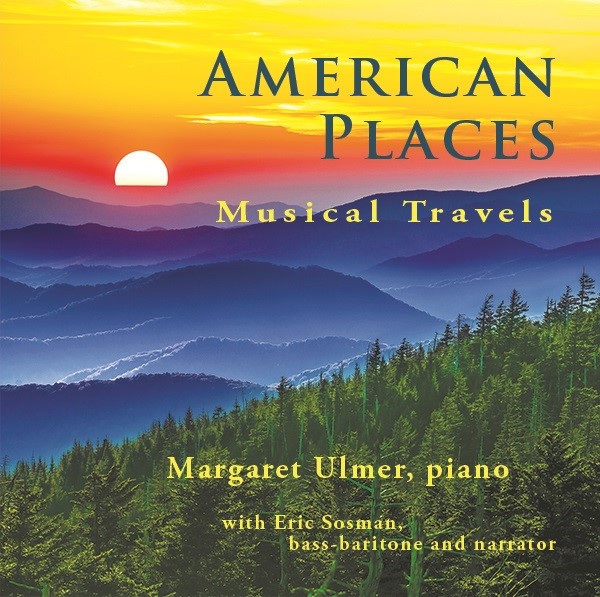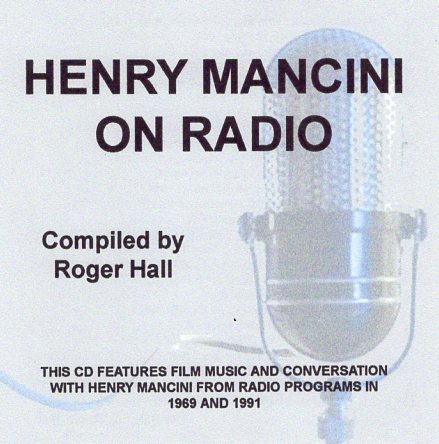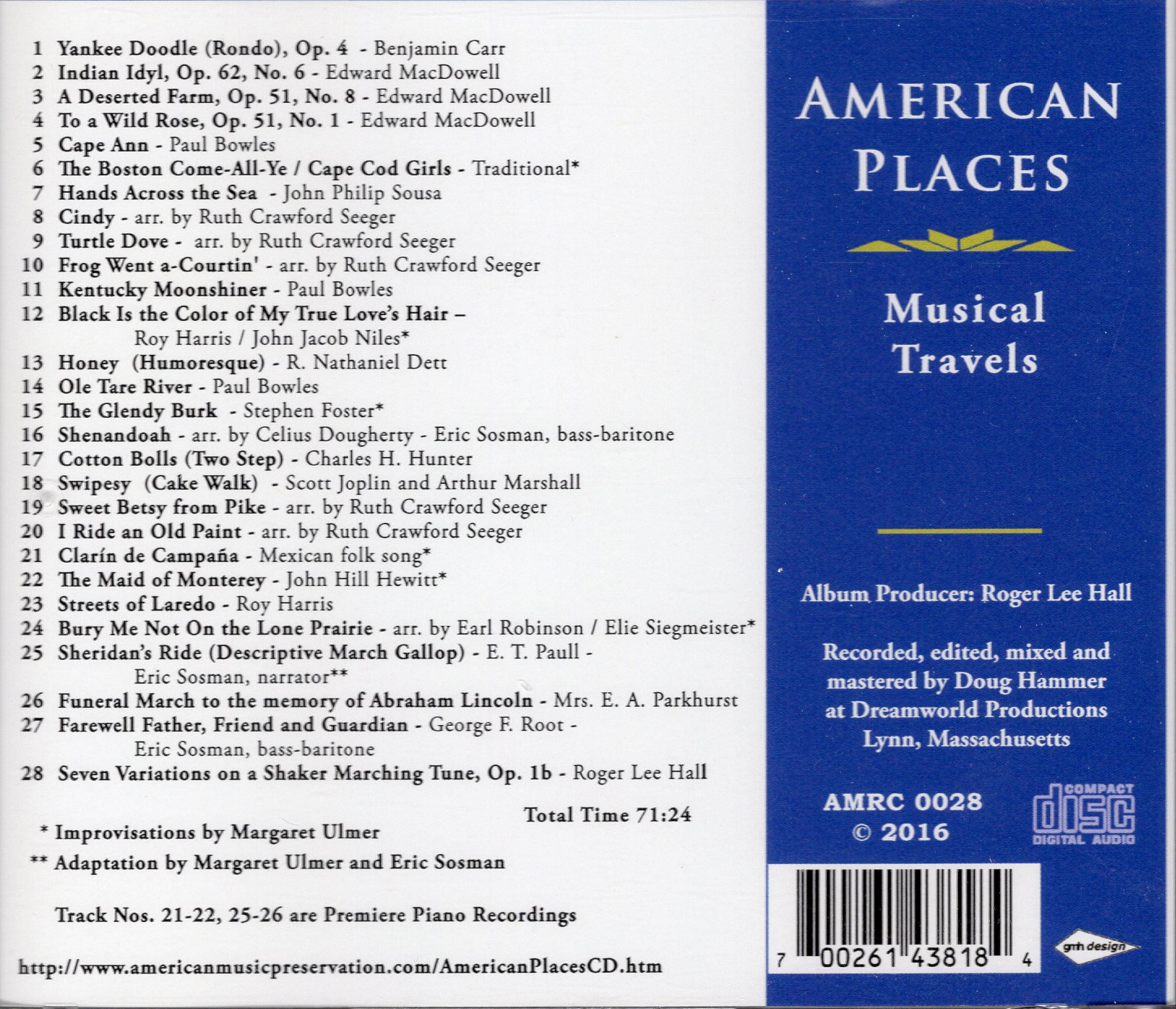

Tunes For 24th Annual
National Carry A Tune Week
October 6-12, 2024
In commemoration of the 100th anniversary
of
the birth of Henry Mancini, 1924-1994
List of Tunes for 2024
This free online event is sponsored each year
by The American Tune Lovers Society

Mark your calendar for the special 25th anniversary National Carry A Tune Week
to be held on October 5-October 11, 2025
If you would like to be reminded of this anniversary event,
send your email address (no advertisers please!)
-- here
The tunes below have links to other web pages.
Some of them have links to YouTube.Here are the 18 tunes chosen for 24th National Carry A Tune Week with links to YouTube for listening...
Patriotic Music

From Gail:
"America the Beautiful" is a patriotic American song.
Its lyrics were written by Katharine Lee Bates
and its music was composed by church organist and choirmaster Samuel A. Ward
at Grace Episcopal Church in Newark, New Jersey.[1]
The two never met.[2]
Ray Charles singing America The Beautiful Lyrics - YouTube

From Jim:
“The Battle Cry of Freedom” was written by George F. Root in support of the Union during the Civil War.
It is a rousing march with exhortations to “rally ‘round the flag” and to cheer “the Union forever! Hurrah, boys, hurrah!”
No doubt it has been sung in later American wars without consciousness of its original divisive intent.
"The Battle Cry of Freedom" on YouTube

From Roger:
I remember marching to this great march tune while a cadet at Eastern Military Academy way back in 1954.
It is a wonderful tune to march to and always made me perk up while marching in a parade.You Tube - NATIONAL EMBLEM MARCH by Edwin Eugene Bagley (1906)
Folk Music

From Gail:
"Where Have All the Flowers Gone?" is a folk song written by American singer-songwriter Pete Seeger in 1955.
Inspired lyrically by the traditional Cossack folk song "Koloda-Duda,"
Seeger borrowed an Irish melody for the music,[1] and published the first three verses in Sing Out! magazine.[2]
Additional verses were added in May 1960 by Joe Hickerson, who turned it into a circular song.
Where Have All the Flowers Gone (youtube.com) – Peter, Paul and Mary
Marlene Dietrich: Where Have All the Flowers Gone? (Live TV, 1963) (youtube.com) – Marlene Dietrich
Where Have All the Flowers Gone? (youtube.com) - Pete Seeger
From Jim:
“Rank Stranger,” written by Albert E. Brumley. The Stanley Brothers made this song a Bluegrass music classic, recorded by dozens of bands. The word “rank” is used in the old-fashioned sense to mean “total” or “complete. The singer returns to his old “home in the mountain” and does not know any of the current residents. “Everybody I met seemed to be a rank stranger.”
From Roger:
I remember first hearing this protest song on the radio in the 1960s
and then going to a local store to buy the Columbia LP record
with that Bob Dylan song. The words have just as much meaning in our country today.
The Times They Are A Changin' - Bob Dylan
Religious Music
From Gail:
"In the Garden" (1912 song), a 1912 gospel song by Charles Austin Miles
Elvis Presley - In the Garden (Official Audio) (youtube.com) – Elvis Presley
From Jim:
“I Was There To Hear Your Borning Cry,” words and music by John C. Yivisaker (1985)
is a modern hymn that quickly became popular. Often sung at Christian Services, from Baptism to Funerals.
The CD I listen to is “Immanuel Sings” by the choir of Immanuel Lutheran Church in Attleboro, Mass.
From Roger:
In honor of the 150th anniversary of the birth of the
major American composer, Charles Edward Ives (1874-1954),
I have chosen one of his early religious tunes,
as edited by John Kirkpatrick
which I remember being impressed with
when singing it in a concert with
The Old Stoughton Musical Society -
America's oldest choral society, founded in 1786.
Though it is rich in Victorian harmonies
it still maintains a deeply expressive feeling.Here is the performance by Old Stoughton Musical Society Chorus, Earl Eyrich, conductor:
"Turn Ye, Turn Ye" (1890) - Charles Ives
words by Rev. Josiah Hopkins
Popular Songs
From Gail:
"When the Red, Red Robin (Comes Bob, Bob, Bobbin' Along)" is a popular song written,
both words and music, by Harry Woods in 1926.
When the Red, Red Robin Comes Bob. Bob. Bobbin' Along (youtube.com) – Doris Day
When The Red Red Robin Comes Bob Bob Bobbin' Along (youtube.com) - Bing Crosby
From Jim:
“A Pretty Girl Is Like A Melody,” music & lyrics by Irving Berlin.
In sort of a reversal of the song’s title, I find the melody itself is so pretty that it “haunts me night and day.”
My favorite recording is sung by Pat Boone on a DOT LP from the late 1950s.
"A Pretty Girl Is Like A Melody" by Pat Boone on You Tube
From Roger:
My early pop song began with just lyrics I wrote in 1963 after a visit to London
where I first heard a Beatles record and visited the Soho district.
In 1964 I wrote the music and had it copyrighted.
It was recorded the following year at a recording studio in Bloomfield, NJ.
Here is my song as sung by Ethel Regan on YouTube -
To play it click this picture:I wrote about this song in my book:
"Gentle Peace" - Songs For Survival
Classical Music
From Gail:
This year I’m choosing songs about birds and gardens. While I don’t have a garden of my own, I do feed birds and love watching them. I saw the original 1956 version of Candide in Boston as a tryout for Broadway when I was just 16. Feed the Birds is from that performance. We went because Robert Roundsville is from our hometown and it was our annual summer trip to the big city.
Candide is an operetta with music composed by Leonard Bernstein and lyrics primarily by the poet Richard Wilbur,
based on the 1759 novella of the same name by Voltaire.
The operetta was first performed in 1956 with a libretto by Lillian Hellman
Candide, Act II: Finale - Make Our Garden Grow (youtube.com) – Robert Rounsville, Barbara Cook – Finale
From Jim:
“Adagio for Strings” by Samuel Barber (1936). This beautiful, melancholy composition only 10 minutes long
is so well loved that it is perhaps overused in concerts, recordings and film music, notably in “The Elephant Man.”
That doesn’t seem to matter to listeners, who almost always are moved by it."Adago For Strings" played by Detroit Symphony Orchestra conducted by Leonard Slatkin on YouTube
From Roger:
Seven Variations on a Shaker Marching Tune, Op. 1, No. 2
I composed this work while a graduate student at Binghamton University in 1971
and based it on a Shaker tune in a 19th century Shaker instruction book.
I revised my composition before it was published in 1984.
This composition is now available on these two AMRC CDs:
You Tube -- "Variations On A Shaker Marching Tune" performed by Kathryn Southworth pianist
Film Music
From Gail:
"Feed the Birds" is a song written by the Sherman Brothers (Richard M. Sherman & Robert B. Sherman)
and featured in the 1964 motion picture Mary Poppins.
Feed The Birds (Mary Poppins) with lyrics (youtube.com)
From Jim:
“The Last of the Mohicans” film score (1992) by Trevor Jones and Randy Edelman. When I saw the film originally and heard a recording of the score I was impressed by the excitement of the music, much in keeping with the story’s action. Yet when I watched the movie recently I was scarcely aware of the score, which probably means it was skillfully integrated. The film won an Academy Award for “Best Sound” only, but the music score itself won a major British award.
THE LAST OF THE MOHICANS Main Theme on YouTube
From Roger
The first LP album I purchased as a teenager was for the TV show, PETER GUNN (1958-59)
One of tunes from PETER GUNN I always liked
with music by Henry Mancini was titled, "Dreamsville,"
with a piano solo performance
by Johnny T. Williams shown here:
He is now known as world famous composer, John Williams
I played the "Dreamsville" tune when doing a tribute to Mancini on a local radio station in 1989
and it is now available on this special limited edition CD:
You can listen to "Dreamsville" on YouTune at this link:https://www.youtube.com/watch?v=N0dYYJfKwY8
Total for National Carry A Tune Week
2001-2023 = 550 tunes chosen
- List of tunes for National Carry A Tune Week 2023
- List of tunes for National Carry A Tune Week 2022
- List of tunes for National Carry Tunes Week 2021
- List of tunes for National Carry A Tune Week 2020
- List of tune for National Carry A Tune Week 2019
- List of tunes for National Carry A Tune Week 2018
- List of tunes for National Carry A Tune Week 2017
- List of tunes for National Carry A Tune Week 2016
- List of tune for National Carry A Tune Week 2015
- List of tunes for National Carry A Tune Week 2014
- List of tunes for National Carry A Tune Week 2013
- List of tunes for National Carry A Tune Week 2012
- List of tunes for National Carry A Tune Week 2011
- List of tunes for National Carry A Tune Week 2010
- List of tunes for National Carry A Tune Week 2009
- List of tunes for National Carry A Tune Week 2008
- List of tunes for National Carry A Tune Week 2007
- List of tunes for National Carry A Tune Week 2006
- List of tunes for National Carry A Tune Week 2005
- List of tunes for National Carry A Tune Week 2001-2004
The Sammy Film Music Awards (SFMA)
List of past Sammy Film Music Awards
Centennial Tributes:
Leroy Anderson (classical-crossover composer)
Gene Autry (western singer-songwriter)
Walter Schumann (film composer)
See the catalogue of CDs in the
American Music Recordings Collection (AMRC)
See the composers listed on the
Please help support the mission of
The American Tune Lovers Society
Order one or both of these CDs

National Carry A Tune Week (Main Page)
© 2024 PineTree Productions. All Rights Reserved for original material on this website.










.jpg)





